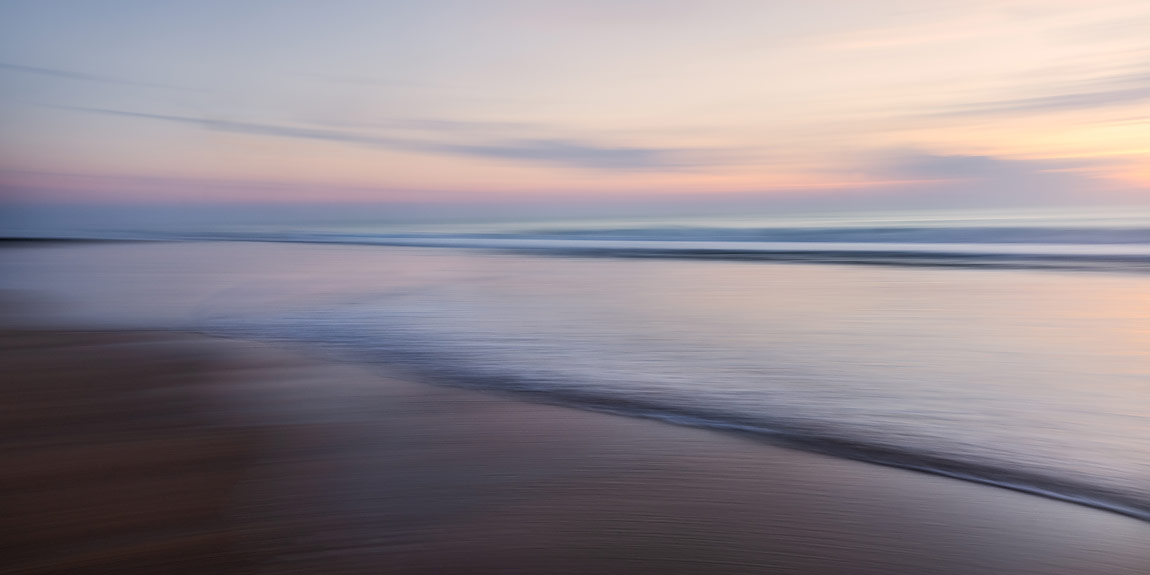When I headed to Palm Coast, Florida, in May 2022 for a seascape photography workshop, I wanted to see if seascapes would provide me with the same high as photographing in snow, to learn to use filters more efficiently and to capture seascapes and waves. I wanted to experiment with capturing the action and high tide, as well as low tide when the beach is more exposed. I was curious to experiment with intentional camera movement with ocean water versus a snow-covered forest. And lastly, I wanted to experiment with photographing the color of the inside of the waves and the slow motion of water flowing over rocks, which would mean experimenting with shutter speed.
From the get-go, I was surprised at how difficult it was to go from fast shutter speeds to slow shutter speeds and to photograph in humid, hot weather. Setting up my tripod among the coquina rocks that are made up of millions of tiny clams that died and accumulated for thousands of years that line the state's coastline was also challenging. And because I didn't see any conspicuous geological feature or piece of driftwood, it was challenging to find a foreground or visual anchor. By the third day, I hoped for a thunderstorm to cool me off and provide dramatic lighting. While it did storm early one evening, I didn't successfully capture any dramatic lightning despite using a longer shutter speed rather than a Lightning Trigger. However, what was most challenging over the course of the few days was to photograph while itching from what seemed like hundreds of no-see-um bites.
Despite the environmental challenges, I kept my lens clean from ocean spray using microfiber cloths. I minimized lens changes to avoid sand, salt, or water getting in contact with my camera or lens. Before leaving the beach daily, I extended my tripod and rinsed it off thoroughly.
One of my favorite images from the trip was taken on the last day at Jacksonville Beach after the dark of night had lifted and before the heat had set in. As the sky opened on this still morning, light and shadow were cast on the water and beach, showcasing different hues and shades. The beach was quiet—no people, no dogs. From where my tripod was set up, I lingered barefoot, quietly taking in the fresh air and photographing the ocean tide coming in and going out until the sun began to rise higher and higher. The wonder of nature, the offering of new beginnings, a new day. I hope this image reminds viewers of the beauty of ocean sunrises they've seen and the memories attached to each one.
That said, because of this trip, I learned that I favor snowscapes where there are no no-see-ums or any kind of bugs and bites, and the timing of sunrise and sunset shoots isn't as critical in the high Arctic in spring or summer. On the other hand, I didn't mind getting my feet wet to help me get closer to the water. I enjoyed learning about the tides, observing the incredible textures and patterns hidden in the sand, and photographing with my wide-angle lens. Using filters and learning the difference between different stop neutral density filters and a circular polarizer was critical.
Overall, I discovered new creative possibilities in ocean and seascape photography while learning how challenging it is to photograph waves regardless of shutter speed. I would encourage any photographer up for the challenge to entertain the ever-changing seascapes and wave photography to get their feet wet. I'm glad I did.
Upload Your Picture • WIN $300 Cash

